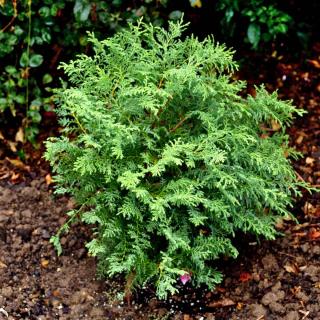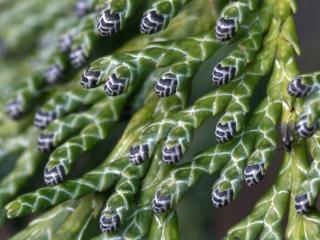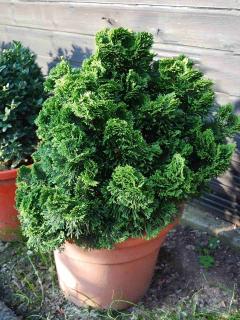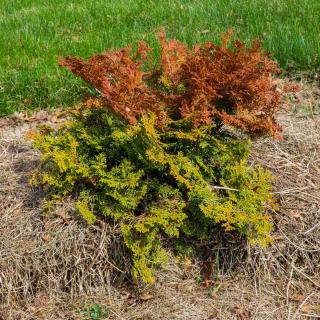

Chamaecyparis is a very beautiful conifer that looks very ornamental, often called the Lawson cypress, Port Orford cedar or false cypress.
Chamaecyparis key facts
Name – Chamaecyparis lawsoniana
Family – Cupressaceae
Type – conifer
Height – 6½ to 65 feet (2 to 20 m)
Exposure – full sun
Soil: ordinary – Foliage: evergreen
It is used as an ornamental cypress tree or as part of a conifer hedge.
 It is preferable to plant it in fall in order to support root development, but you can also plant it until spring, on non-freezing days.
It is preferable to plant it in fall in order to support root development, but you can also plant it until spring, on non-freezing days.
 You may equalize the tree 1 or 2 times if needed. Clean it up at the end of winter.
You may equalize the tree 1 or 2 times if needed. Clean it up at the end of winter.
Chamaecyparis stands pruning very well, which makes it possible to shape it as you wish, and to prune it as often as you care to in order to keep its shape.
Watering Chamaecyparis
Water regularly during the first 2 years after planting, if it doesn’t rain of course.
After that, it will only need to be watered in case of extended dry spell or strong heat.
Over the first few seasons, you can amend the soil with conifer-specific fertilizer in order to spur proper growth.
 Chamaecyparis lawsoniana is a genus of the Cupressaceae family and is still a close cousin to the cypress, sharing its distinctive shape and leaves.
Chamaecyparis lawsoniana is a genus of the Cupressaceae family and is still a close cousin to the cypress, sharing its distinctive shape and leaves.
It holds out well to the cold and to freezing, which makes it a hardy conifer for all regions.
It grows in many different shapes and colors, which makes it also a magnificent ornamental tree.
It’s name “Lawson” was attributed in reference to the famous Scottish botanist, not because he was the person who discovered it, but because Murray, another botanist, named the tree in his honor.

A supportive practice is to spread mulch, for instance maritime pine bark, at the base of the tree.